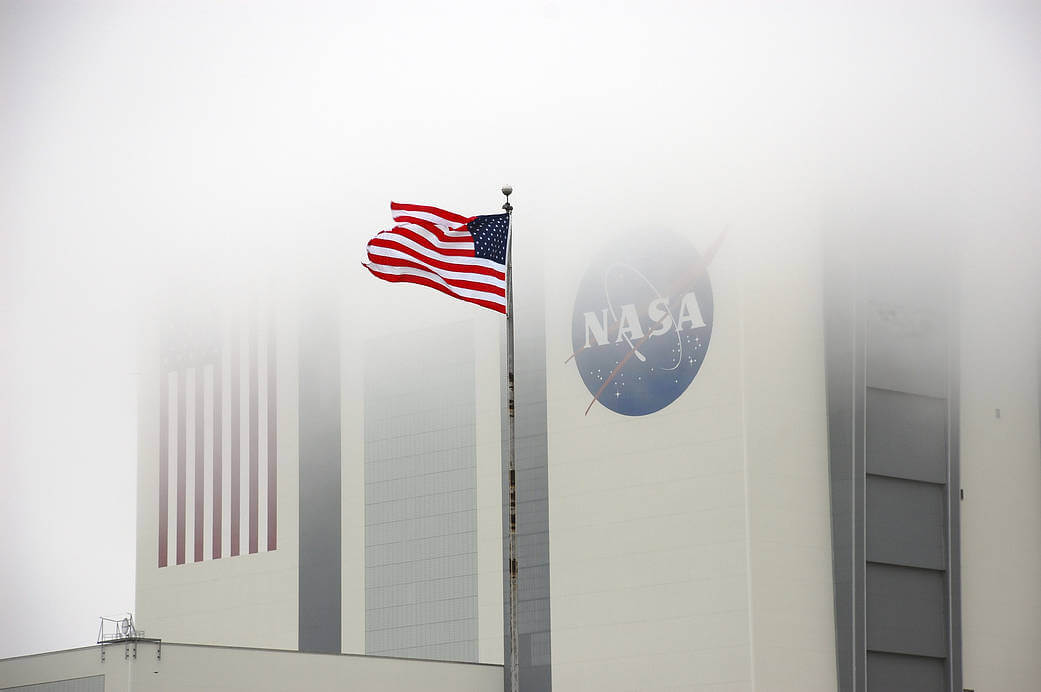How a Cloud is Formed Easy Model
How Do Clouds Form?
The Short Answer:
Clouds are created when water vapor, an invisible gas, turns into liquid water droplets. These water droplets form on tiny particles, like dust, that are floating in the air.

A camera on NASA's Terra satellite captured this image of clouds over the Southern Indian Ocean. Image credit: NASA/JPL-Caltech
You hang up a wet towel and, when you come back, it's dry. You set out a bowl of water for your dog and when you look again, the water level in the bowl has dropped even though Woofy has been nowhere near the bowl.
Where did the missing water go? It evaporated. That means some of the liquid water in the towel or bowl changed into an invisible gas called water vapor and drifted away into the atmosphere. (Notice that "evaporated" contains the word "vapor.")
The same thing is constantly happening with oceans, lakes, rivers, swamps, swimming pools – and everywhere water is in contact with air.
Liquid water changes into a gas when water molecules get extra energy from a heat source such as the Sun or from other water molecules running into them. These energetic molecules then escape from the liquid water in the form of gas. In the process of changing from liquid to gas, the molecules absorb heat, which they carry with them into the atmosphere. That cools the water they leave behind.

Heat causes some of the liquid water – from places like oceans, rivers and swimming pools – to change into an invisible gas called water vapor. This process is called evaporation and it's the start of how clouds are formed. Image credit: NASA/JPL-Caltech/Alex Novati
The air can only hold a certain amount of water vapor, depending on the temperature and weight of the air – or atmospheric pressure – in a given area. The higher the temperature or atmospheric pressure, the more water vapor the air can hold. When a certain volume of air is holding all the water vapor it can hold, it is said to be "saturated."
What happens if a saturated volume of air cools or the atmospheric pressure drops? The air is no longer able to hold all that water vapor. The excess amount changes from a gas into a liquid or solid (ice). The process of water changing from a gas to a liquid is called "condensation," and when gas changes directly into a solid, it is called "deposition." These two processes are how clouds form.
Condensation happens with the help of tiny particles floating around in the air, such as dust, salt crystals from sea spray, bacteria or even ash from volcanoes. Those particles provide surfaces on which water vapor can change into liquid droplets or ice crystals.
A large accumulation of such droplets or ice crystals is a cloud.

Dust and other particles floating in the air provide surfaces for water vapor to turn into water drops or ice crystals. The tiny drops of water condense on the particles to form cloud droplets. Clouds are made up of a bunch of cloud droplets bundled together with raindrops. Image credit: NASA/JPL-Caltech/Alex Novati
We usually think of clouds as being up in the sky, but when conditions are right, a cloud can form at ground level, too. Then it's called "fog." If you've ever walked through fog, you've walked through a cloud.

Fog can be seen at the top of this image of the 525-foot tall Vehicle Assembly Building at NASA's Kennedy Space Center in Florida. Image credit: NASA/Ben Smegelsky
Although the basic idea of cloud formation is easy to understand, there is much more to learn. Peek beneath a cloud's fluffy exterior, and you'll find a world of complexity. In fact, clouds are considered one of the most challenging aspects of climate science.
That's because truly understanding clouds requires a deep understanding of the entire atmosphere. Scientists are working to increase their understanding, with the help of instruments such as those on NASA's Terra, Aqua, Aura, CALIPSO, CloudSat and other satellites that observe different aspects of clouds.

NASA has a fleet of spacecraft that orbit Earth, called satellites. Many of them study clouds, weather, climate and more. Image credit: NASA/JPL-Caltech/Alex Novati
The better we can understand clouds and the atmosphere that creates them, the better we can find out what's happening to our climate.
Related NASA Missions

Aqua

Aura

CALIPSO

CloudSat

Terra
Related Resources for Educators
Make a cloud in a bottle with this DIY project!
lockhartchemb1995.blogspot.com
Source: https://climatekids.nasa.gov/cloud-formation/
0 Response to "How a Cloud is Formed Easy Model"
ارسال یک نظر